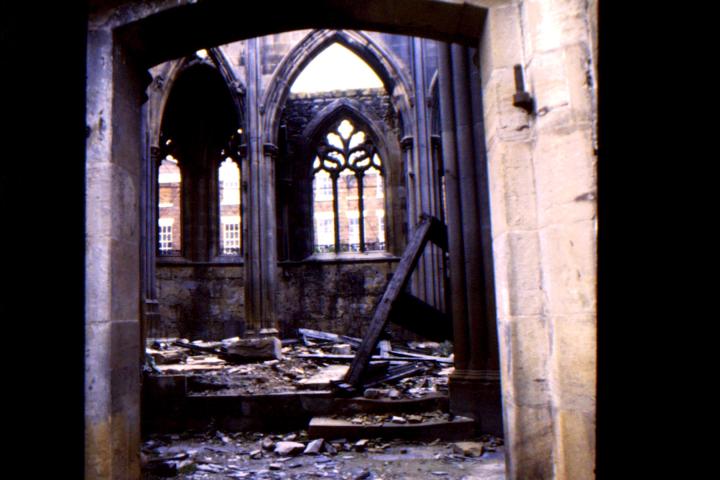The Catholic Apostolic Church was a remarkable church which combined revivalist enthusiasm with liturgical worship and married a millenarian theology with prophetic ministry. Because of their belief in the imminent second coming they set up a system that ultimately proved to guarantee their own obsolescence. Believing that the second coming of Christ was very near they tried to re-establish the offices of the primitive church starting with Apostles in 1832 which had reached the full number by 1835. Since only they could ordain the prophets, evangelists, pastors, ‘angels’ (bishops), deacons and other orders down to doorkeepers, the death of the last apostle in 1901, before the return of the Lord, meant that there was no longer any possibility of continuing in the long term.
I am not sure how many Catholic Apostolic churches there ever were but their churches were very grand and required sophisticated architectural designs. Because they tended to include in their number many wealthy people they were often able to design and build some quite magnificent buildings. The church in Gordon Square in London, now leased to various Anglican groups, would be the best surviving example of their architecture, but the Roman Catholic Church in Bristol was originally Catholic Apostolic and is another impressive building, in this case having a classical design. I did see the less grand Catholic Apostolic church in Belfast before it was suddenly demolished but wasn’t able to take a photograph of it. Indeed an online search does not produce any images of this building, although it would be nice to think some images are preserved somewhere. It seems to have given up its licence to conduct marriages in 1954.
This excursion into the world of the now vanished Catholic Apostolic Church was prompted by the discovery of an old USB on which I had transferred at some point a couple of slides featuring the Catholic Apostolic Church on Catharine Street, Liverpool. It closed at some point in the 1970s and later was used by the New Testament Church of God. Later still it passed into secular use, then became badly dilapidated before being burnt down in the mid-1980s.

The church in the mid-1980s
I found these images on the USB, originally taken as 35 mm slides the first of which I must have taken in about 1985 and the second in 1986. The first shows the church when it was unused and beginning to show signs of neglect. The second shows the view from the side towards the high altar after it was destroyed by fire. A great shame that such an unusual building was lost. Pevsner recorded that the plan of the building had been revealed to the first minister in a dream. He also said there were Flemish roundels incorporated in the stained glass windows. Whatever was there the little that survived was subsequently demolished and a block of flats built on the site.

The ruined interior after the fire
The image at the top of the page is a detail from an aerial view of Liverpool by John R. Isaac in 1859 and published in New York. This is a view from a hot air balloon and can be viewed on the Library of Congress site here.
Amongst the churches found in that image is the Catholic Apostolic Church on the corner of Catharine Street and Canning Street, it can be seen slightly to the right of centre still with its spire which was removed in the early 1970s. An account of all the churches in that picture can be read in an earlier post: Seven Churches in Liverpool in 1859 viewed from the air.
No pictures or text may be reproduced from this site without the express permission of the author.
https://mansfieldtraquair.org.uk/building/catholic-apostolic-church
The Edinburgh Catholic Apostolic Church is now the home of the Scottish Council of Voluntary Organisations. The church itself – fabulously decorated with murals by Phoebe Traquair – is open to the public and used for concerts and other appropriate events. See pictures of the church at the link above.
LikeLiked by 1 person
That looks like a fantastic building. Very glad that it has been saved and maintained and has a worthwhile use today.
LikeLike